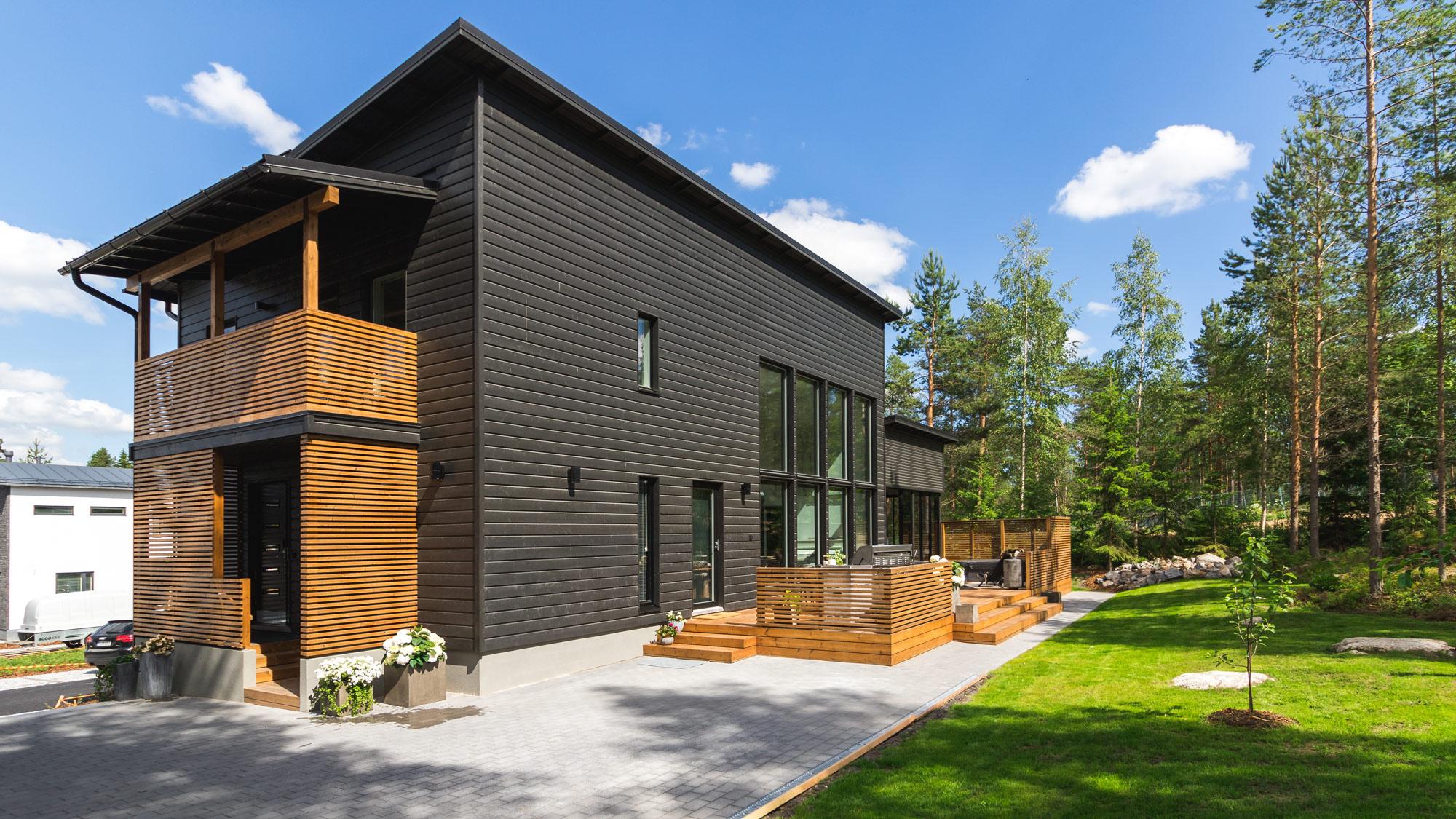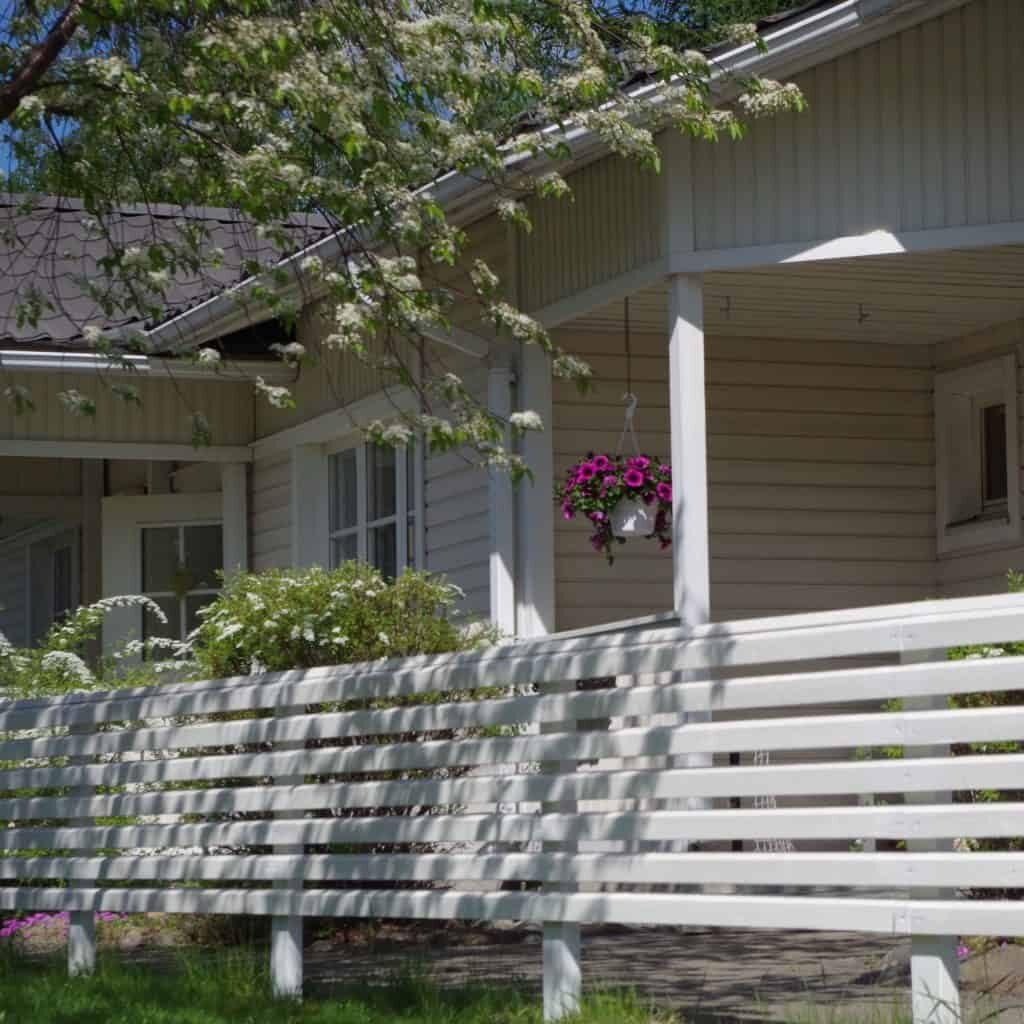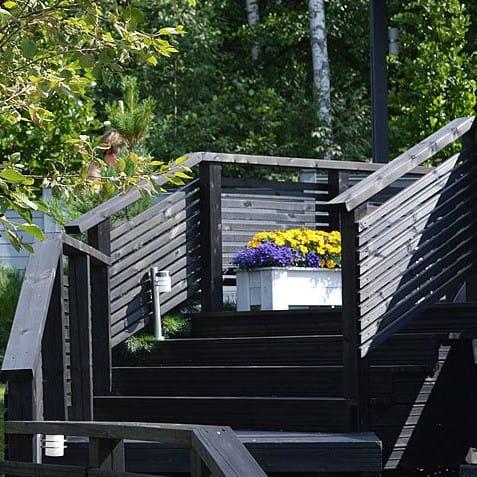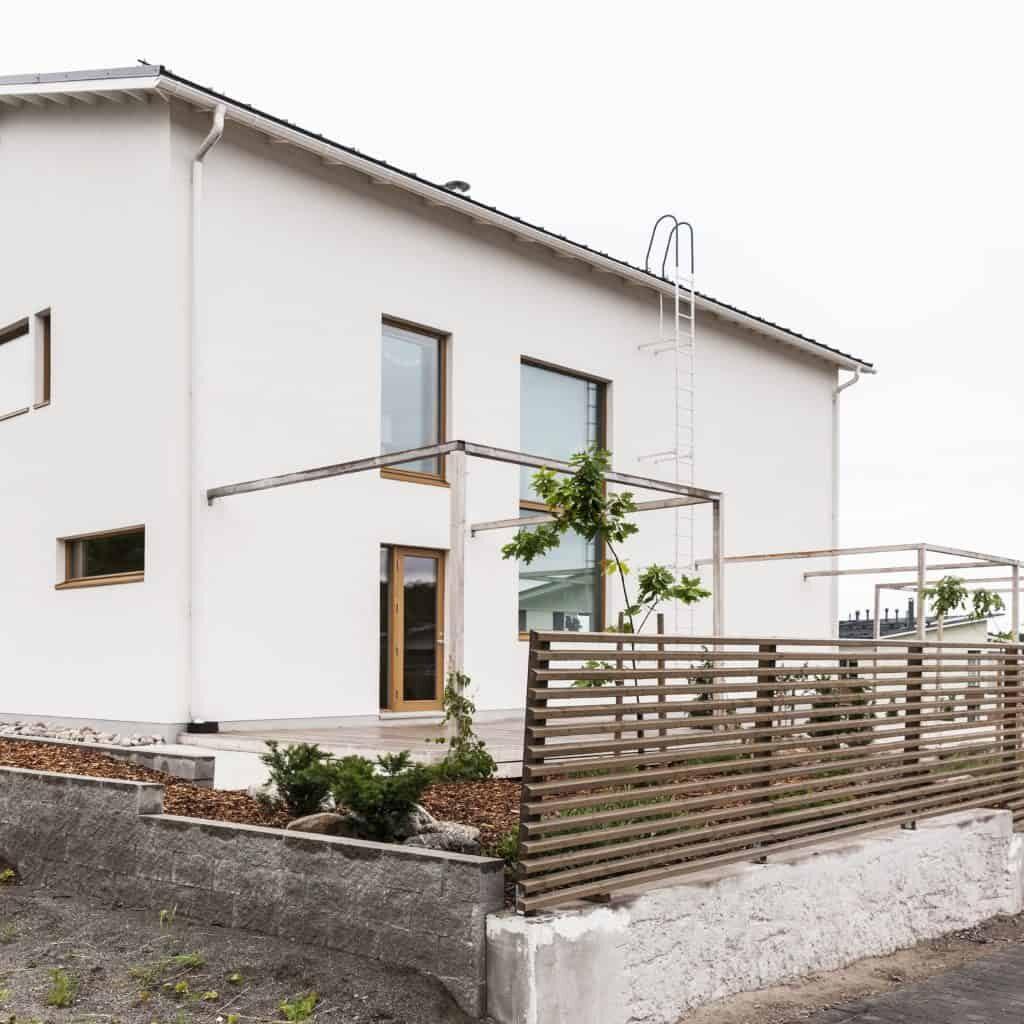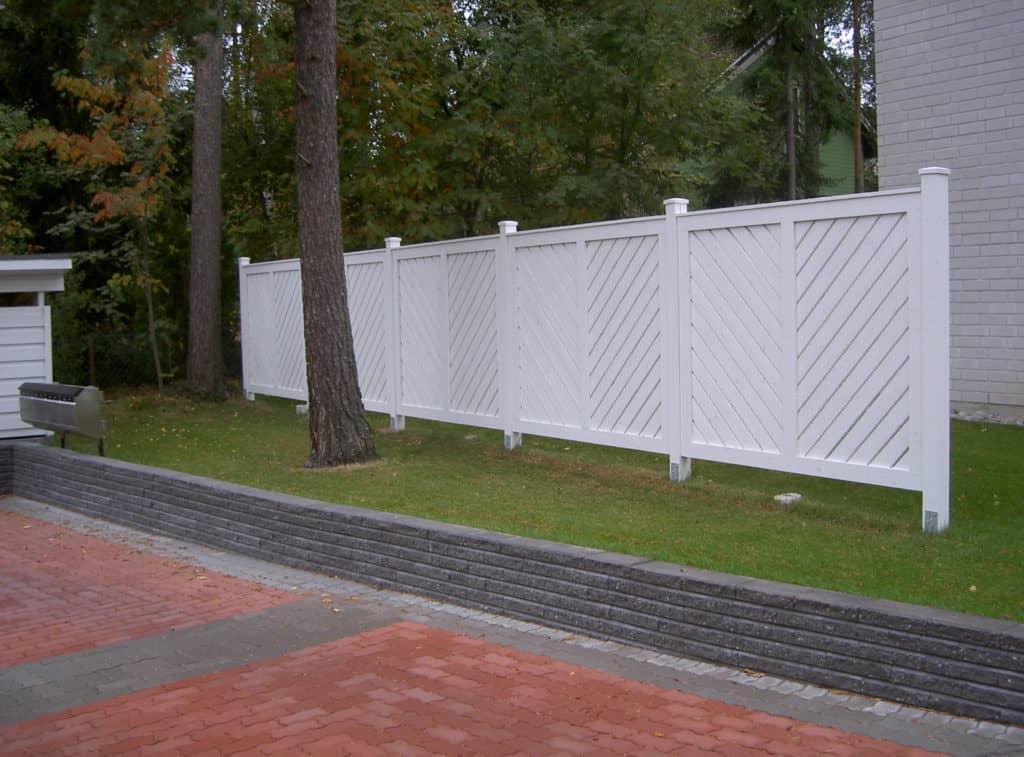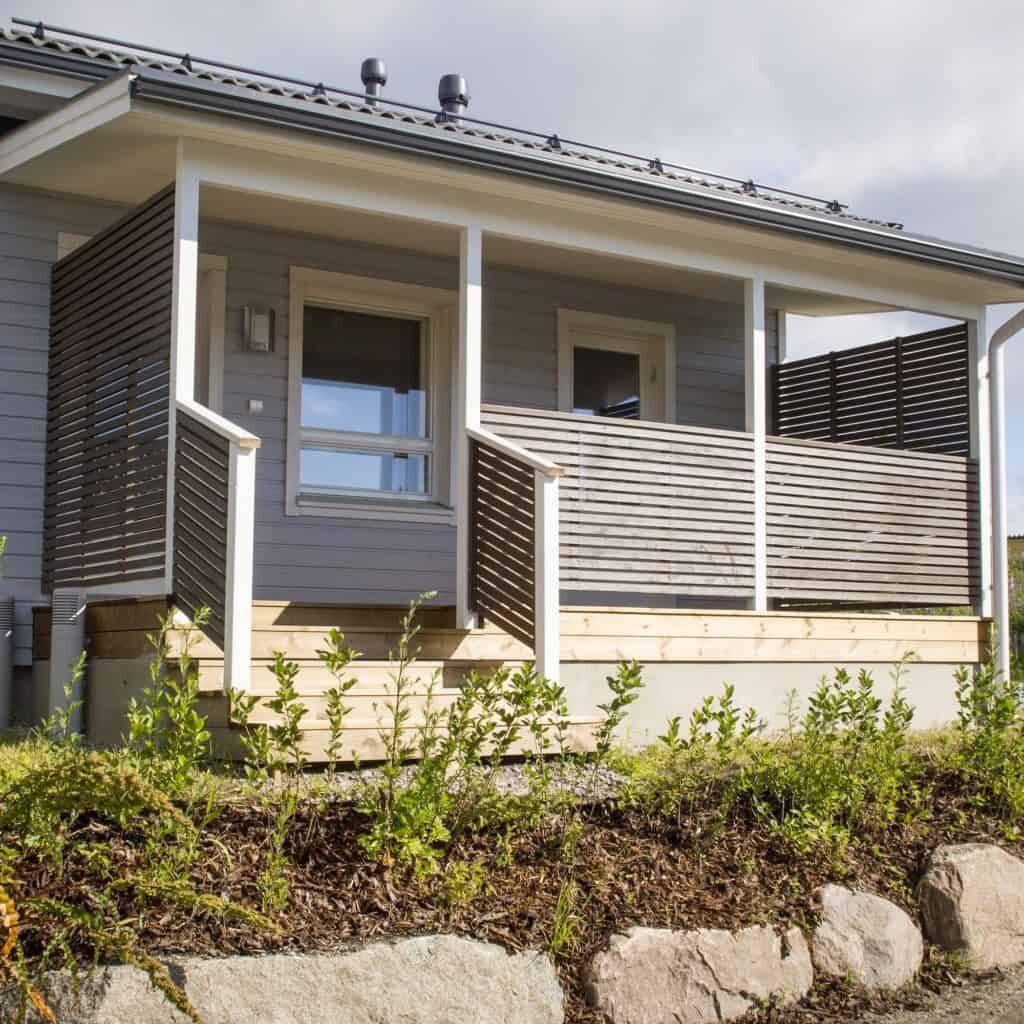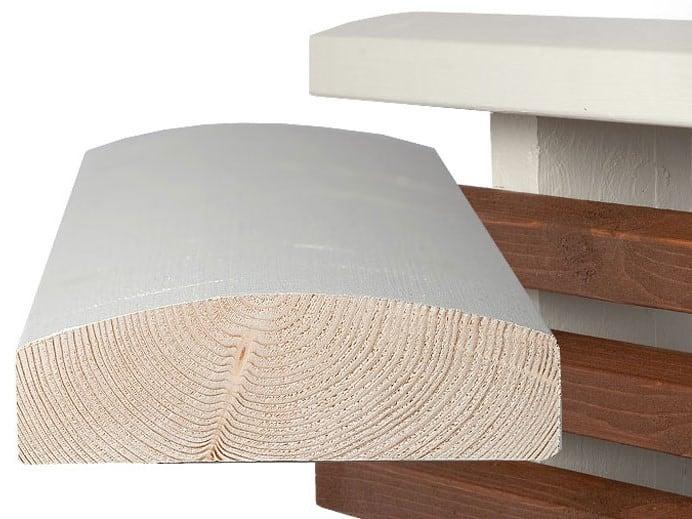A terrace fence makes a significant contribution to the facade and appearance of the terrace and the house as a whole, but the primary reason for building a terrace fence is always safety.
Not only is wood a warm and sturdy material for a patio fence, it is also an ecological and long-lasting choice. In this article, we will discuss the different types of decking railing designs and the wood products suitable for decking fence construction. What kind of patio fence are you designing?
When is a terrace railing needed?
A terrace handrail must be built when the height of the fall exceeds 500 mm and there is a risk of falling or stumbling. The railing may be an open railing or a guardrail, but it must be safe and fit for purpose.
Some important dimensions for the design of the terrace railing:
- The guardrail must be used in areas with a level difference of more than 700 mm where children have access.
- The protective part of the handrail shall extend at least 700 mm above the surface of the platform or step. It shall not contain any horizontal structures or patterns that make climbing possible.
- If the protective part of the handrail has only vertical structures, the openings in the handrail shall not allow more than 110 mm of cube to pass through. In residential accommodation, the size of the cube shall not exceed 100 mm at the edge.
Always check the Finnish Building Code (F2) for more detailed building regulations on terrace fences and railings before starting a project.
Patio railing designs: a tight windbreak or an airy open railing?
Where are you planning a new terrace railing? Is it your home or summer cottage or perhaps another building? First of all, look at the existing fences and screens, what style of fence do you already have? It is usually best to choose a style that is consistent with previous designs.
Whatever model of handrail you choose, make sure it can withstand the personal loads it is intended to carry. The purpose of a handrail is to prevent falls, so it should be built robustly enough and should not have excessive gaps.
If your terrace needs privacy, we recommend a more compact railing, for example made of a wide fence board. If, on the other hand, you want a lighter look and your neighbours don't usually peek right next to your terrace, thinner lattice railings are the right choice for your terrace.
Fence for the terrace - a tightly installed garden fence is safe
For the patio builder looking for a dense windbreak and a visual barrier, a top-painted fence board is a very good solution. The most common thickness is 20 mm (our other options are 23 mm or 28 mm) and the width can be 95 mm, 120 mm or 145 mm.
Whether your installation orientation is horizontal, vertical or diagonal, by securing the fence boards tightly, you ensure both the lowest possible risk of falling and good weather protection for your terrace. However, make sure that air can flow between the fence boards, and that you fix your patio fence frame posts at a sufficiently short distance from each other - this will ensure that even a strong wind does not put too much strain on your patio fence.
Thanks to its industrial interior finish, the fence board only requires a light finish coat and careful treatment of the fixing marks and cut-off surfaces. We recommend that you always use stainless steel screws to fix the fence boards.
Terrace railing as a trim solution: lattice rails create a modern look
If you're looking for something lighter than garden timber as a balustrade material for your terrace, laths (directional or diagonal) are an excellent solution. Siparila's pre-painted trellis strips come in standard colours of white, grey and brown, but we can make strips for your railing to order in any of the opaque or audible shades on our exterior colour charts.
Oriented strand: lath 28×68 mm and lath 40×42 mm
Vinorimat: lath 28×45/30 mm and lath 42×42/32 mm
As with the fence board, pre-painted lattice batten will speed up your building project. Nail or screw the laths in place from the top, but be sure to paint the fixing points and cut-offs with a generous amount of paint to prevent moisture from entering the wood at those points too.
Also consider the handrail: choose a tree where the water will not stand on it
When building a terrace railing, and not just a lightweight screen, you should also consider the handrail. Often a suitable height for a handrail is around 900 mm, or if you are planning a 1000 mm high handrail you can also shape the top part of the handrail as a handrail.
In the Siparila range you will find pre-painted railing wire, which is quick to install, as like many of our other yard construction products, it only requires a finishing coat of paint and treatment of the fixing and cutting surfaces. The railing's convex top surface and industrial primer ensure that water does not stand on the railing and degrade the life of the wood.
Terrace fence painting
Are you considering painting your patio fence? If you are painting an old fence for maintenance, remember to sand off the old paint and wash the dust and spores off the wood with a mould cleaner.
If you're thinking of building a new fence from a completely unpainted material, read these tips for painting outside:
- The perfect temperature for painting outside is around +10 - +20°C.
- The weather should preferably be cloudy and the humidity below 80%.
- In hot sunshine, the paint dries too quickly and cannot form a hard film to protect the wood.
- Plan your painting job so that you can finish the length of the laths or fence boards all at once (otherwise you may leave a clear border on the surface).
Benefits of painted railing and fencing materials
If sacrificing summer days for a painting job doesn't sound like your passion, we recommend opting for pre-painted landscaping products instead of painting yourself.
Benefits of top-coated wood products for the landscaper:
- Finland's changing seasons and weather conditions put building materials to the test. In Siparila's pre-coated products, the primer protects the fence board against blue staining and mould, while the topcoat film protects against the sun's UV rays.
- Industrial indoor painting is of high quality, so bad weather or contaminants cannot affect the quality of the paint surface in the middle of a building project.
- Building a fence or railing is remarkably quick, as the pre-painted wood only requires a light finishing coat on site and treatment of the cut-off and fixing points. So you can forget about the easels and paint-wet boards spread around the yard and spend your summer holidays in a more relaxed way.
Need more ideas for your garden?
Check out our comprehensive blog post on the use of wood in garden construction "
See all our landscaping products "
